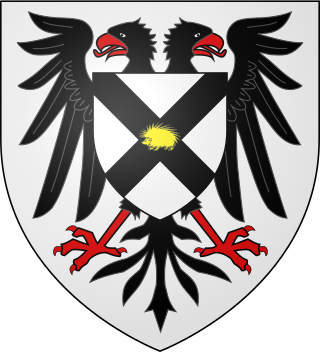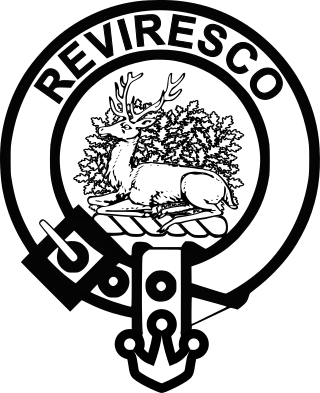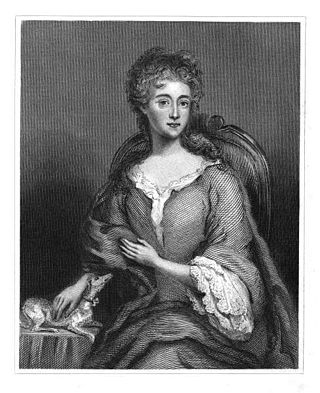
Caerlaverock Castle is a moated triangular castle first built in the 13th century. It is located on the southern coast of Scotland, eleven kilometres south of Dumfries, on the edge of the Caerlaverock National Nature Reserve. Caerlaverock was a stronghold of the Maxwell family from the 13th century until the 17th century, when the castle was abandoned. It was besieged by the English during the Wars of Scottish Independence, and underwent several partial demolitions and reconstructions over the 14th and 15th centuries. In the 17th century, the Maxwells were created Earls of Nithsdale, and built a new lodging within the walls, described as among "the most ambitious early classical domestic architecture in Scotland". In 1640 the castle was besieged for the last time by the Protestant Covenanter army and was subsequently abandoned. Although demolished and rebuilt several times, the castle retains the distinctive triangular plan first laid out in the 13th century. Caerlaverock Castle was built to control trade in early times.

Lord Herries of Terregles is a hereditary title in the Peerage of Scotland. It was created in 1490 for Herbert Herries with remainder to his heirs general.

Earl of Nithsdale was a title in the Peerage of Scotland. It was created in 1620 for Robert Maxwell, 9th Lord Maxwell, with remainder to heirs male. He was made Lord Maxwell, Eskdale and Carlyle at the same time. The title of Lord Maxwell had been created in the Peerage of Scotland in 1445 for Herbert Maxwell.

Clan Maxwell is a Scottish clan of the Scottish Lowlands and is recognized as such by the Lord Lyon King of Arms. However, as the clan does not currently have a chief, it is considered an armigerous clan.
William Maxwell may refer to:
William Maxwell, 5th Earl of Nithsdale, was a Roman Catholic member of the Scottish nobility who took part in the Jacobite rising of 1715. He was attainted with his titles forfeited. However, Lord Nithsdale made a celebrated escape from the Tower of London by changing clothes with his wife's maid the day before he was due to be executed. The lordship of Herries of Terregles was later restored to his descendants and remains extant.

The Abbey of Dulce Cor, better known as Sweetheart Abbey, was a Cistercian monastery founded in 1275 in what is now the village of New Abbey, in the historical county of Kirkcudbrightshire in Dumfries and Galloway, 8 miles (13 km) south of Dumfries.
This is a list of people who have served as Lord-Lieutenant of Kirkcudbright, part of the Dumfries and Galloway council area of south-west Scotland. Prior to 1975 the lieutenancy corresponded to the historic county of Kirkcudbrightshire. Since 1975 the lieutenancy area has been the slightly smaller Stewartry district, corresponding to the local government district of Stewartry established in 1975 and abolished in 1996. From 1975 until 1996 the title was the "Lord-Lieutenant for Dumfries and Galloway Region ". In 1996 the title was changed to "Lord-Lieutenant for the Stewartry of Kirkcudbright".

Winifred Maxwell, Countess of Nithsdale, is best known for arranging the daring escape of her husband, William Maxwell, 5th Earl of Nithsdale, from the Tower of London in 1716.

Terregles is a village and civil parish near Dumfries, in Dumfries and Galloway, Scotland. It lies in the former county of Kirkcudbrightshire.

Edward George Fitzalan-Howard, 1st Baron Howard of Glossop PC, styled Lord Edward Howard between 1842 and 1869, was a British Liberal politician. He served as Vice-Chamberlain of the Household under Lord John Russell from 1846 to 1852.

Gwendolen Mary Fitzalan-Howard, Duchess of Norfolk, 12th Lady Herries of Terregles was the eldest child of Marmaduke Constable-Maxwell, 11th Lord Herries of Terregles and his wife, Angela. On 15 February 1904, she married her first cousin once removed, Henry Fitzalan-Howard, 15th Duke of Norfolk. The couple later had four children:
There have been two baronetcies created for members of the Haggerston, later Constable Maxwell-Scott family, one in the Baronetage of England and one in the Baronetage of the United Kingdom. Only one creation is extant as of 2008. The Haggerston, later Constable Maxwell-Scott Baronetcy, of Haggerston in the County of Northumberland, was created in the Baronetage of England on 15 August 1642 for Thomas Haggerston, of Haggerton Castle, Northumberland, a loyal Royalist who served as a colonel in the army of King Charles I. The Haggerston were recusant in the 17th century and the estates were sequestered and forfeit to the Commonwealth of England in 1649 but were repurchased by the first Baronet in 1653. The line of the fourth Baronet failed on the death of the twelfth Baronet in 1972. The title reverted to the line of William Haggerston, second son of the third Baronet and younger brother of the fourth Baronet. In 1746 he inherited estates in Yorkshire from his great-uncle Sir Marmaduke Francis Constable, 4th and last Baronet, of Everingham, and assumed the surname of Constable in lieu of his patronymic. In 1758 he married Winifred, daughter of Robert Maxwell, titular sixth Earl of Nithsdale, and assumed by Royal licence the additional surname of Maxwell. Winifred was considered to be the heiress to the Scottish lordship of Herries of Terregles held by her father. Constable-Maxwell built a new house at Everingham Park on the Constable estate in Yorkshire.

Robert Maxwell, 1st Earl of Nithsdale, was a Scottish nobleman. He succeeded his brother as 10th Lord Maxwell in 1613, and was created Earl of Nithsdale in 1620. General of Scots in Danish-Norwegian service during the Thirty Years' War. A loyal supporter of Charles I and a prominent Catholic, he lost his titles and estates in 1645, dying on the Isle of Man in 1646.
John Maxwell, 8th Lord Maxwell was a Scottish Catholic nobleman. In 1581 he was created Earl of Morton, and in 1587 he travelled to Spain where he took part in the planning of the Spanish Armada.
John Maxwell, 9th Lord Maxwell was a Scottish Catholic nobleman. He escaped from Edinburgh Castle in 1607, and in 1608 shot the Laird of Johnstone. For these crimes, he was executed and his titles were forfeit.

The Battle of Dryfe Sands was a Scottish clan battle that took place on 6 December 1593, near Lockerbie, Scotland. It was fought between the Clan Maxwell and Clan Johnstone after a hundred years of feuding between them. The Johnstones won a decisive victory over the Maxwells.
Catherine Margaret Mary Maxwell Stuart, 21st Lady of Traquair is a Scottish landowner, politician, hotelier, brewer, and writer. She is the first female Laird of Traquair and, at the time she succeeded her father in 1990, she was the only female laird in Scotland. She took over the management of the lairdship from her mother in 1999, which includes a bed and breakfast and ancient brewery. A lifelong socialist, Maxwell Stuart ran for public office four times as a Labour Party candidate, including in the 2003 Scottish Parliament election and the 2007 Scottish Parliament election.
William Constable-Maxwell, 10th Lord Herries of Terregles was a Scottish peer and a landowner in England and Scotland. In 1858 he was restored to the peerage of Lord Herries of Terregles which had been lost by an ancestor in 1716.












